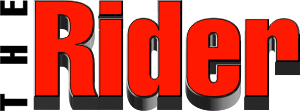Originally published in the March/April 2018 Edition of The Rider
By Karen Dallimore
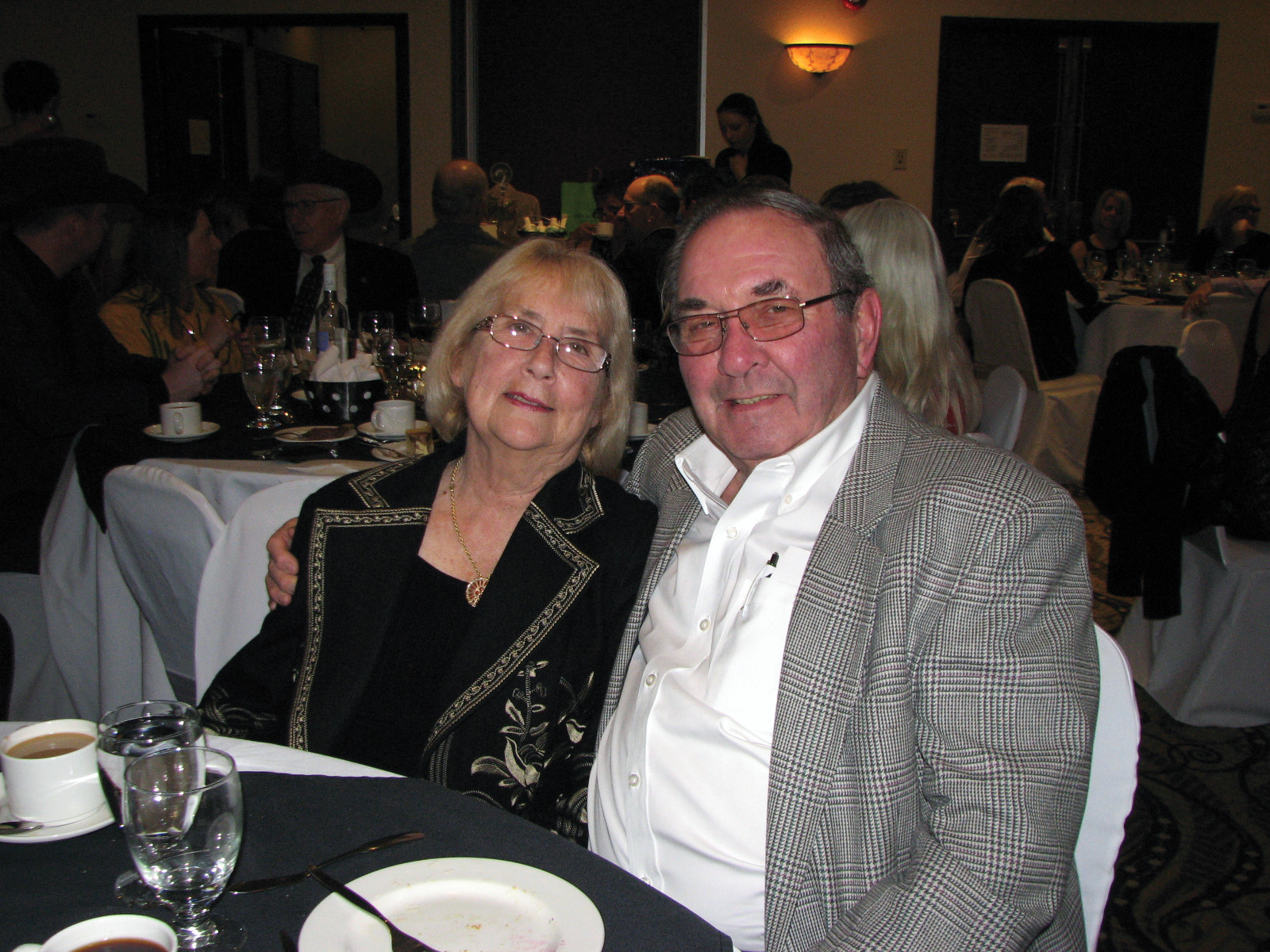 Editor's Note: In remembrance of Roy Ionson, who passed away on March 21st, we present this story which was originally published in our March/April and May 2018 Editions.
Editor's Note: In remembrance of Roy Ionson, who passed away on March 21st, we present this story which was originally published in our March/April and May 2018 Editions.
When the bridge went down in the village of Chesley, Roy and Joan Ionson heard about it in their tack store first. If you ever want to know what’s going on just go to Ionson’s Saddlery on the edge of town. The coffee pot is always on, tucked beside a wall of photos and a stream of never-ending stories.
You may hear how Joan and Roy met, or how Roy started up the Ontario Quarter Horse Association. He might tell you about his involvement with the Western Horse Association of Ontario, or how he bought his first Quarter Horse, Charlie, for $400 from Cletus Hulling in Illinois back in 1954.
Joan will spell out the names for you, said Roy. Her father would give her $50 if she stayed top of the class for spelling. She worked hard, using the money to keep her first horse, Smokey. He was a two-year-old Arabian stallion, “unbroken, untouched, un-everything,” said Joan. She was responsible for his upkeep. She was also responsible for his training but unfortunately she knew nothing about riding and only managed to teach him to gallop everywhere, stopping him by running him into fences.
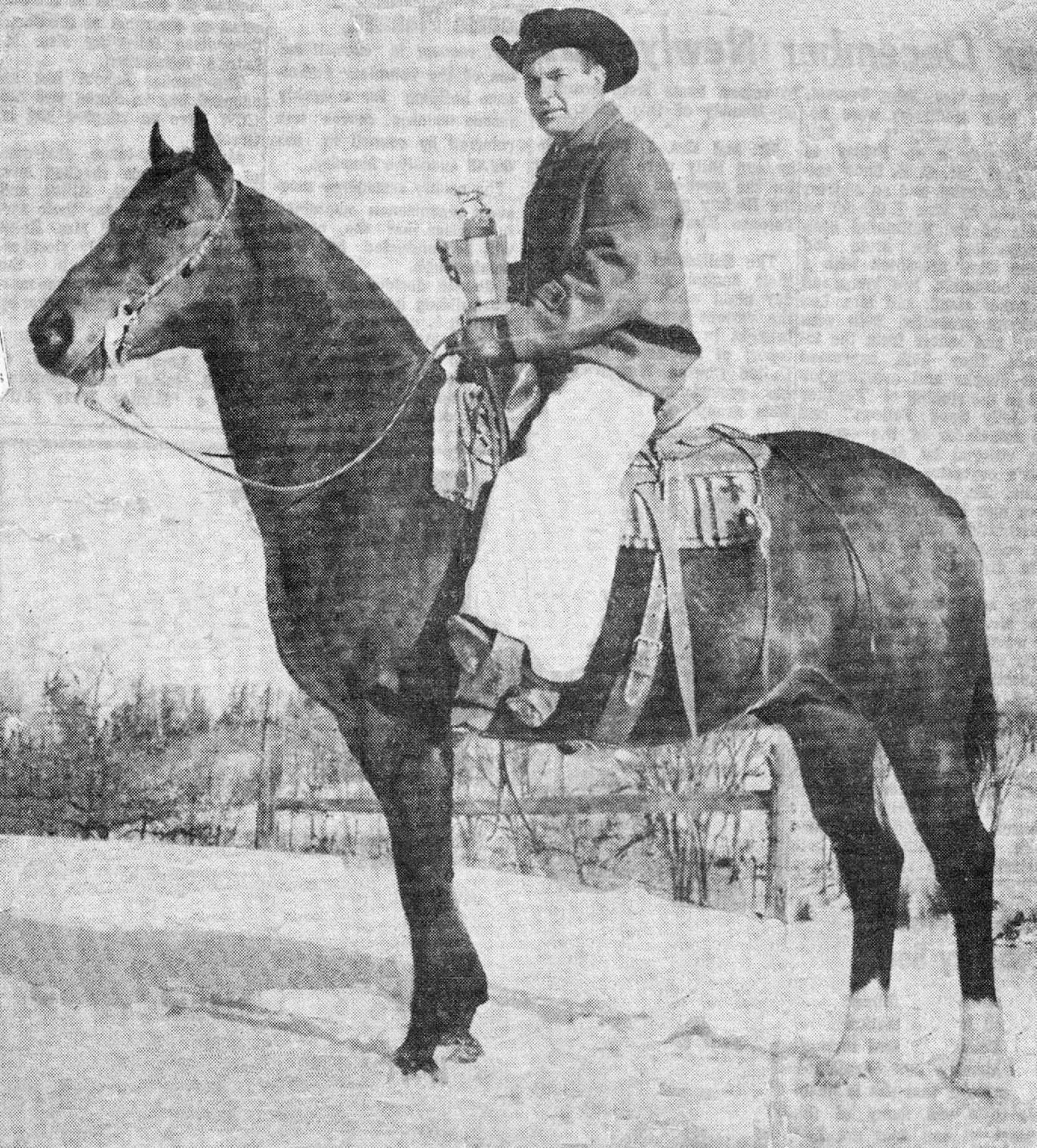 As a stallion, Smokey was very rude. Victor Smith at the Palomino Ranch offered to get Smokey gelded. At that time you had to take your horse to the University of Guelph for the surgery. Smith’s hired man, Herb Towers (who was quite the cowboy at the time) delivered Smokey and on his way home with Joan he had to stop by the Galt Spring Fair to pick up a Saddlebred stallion for Bill Long.
As a stallion, Smokey was very rude. Victor Smith at the Palomino Ranch offered to get Smokey gelded. At that time you had to take your horse to the University of Guelph for the surgery. Smith’s hired man, Herb Towers (who was quite the cowboy at the time) delivered Smokey and on his way home with Joan he had to stop by the Galt Spring Fair to pick up a Saddlebred stallion for Bill Long.
At the fair, along comes this fella riding a black stallion. It was Roy. As Roy recalled the meeting, “It was terribly romantic and it had a horse in it, like everything else ever since.”
The next time they met was at the Royal Connaught Hotel in Hamilton where the Western Horse Association of Ontario (WHAO) meetings were held. Roy was waiting for her near the elevator. “He knew I’d show up,” said Joan. After the meeting they always went for Chinese food, so Roy asked Joan if she wanted to come? What did Joan say? “No!” He asked if I’d ever tried it? Joan replied, “no, but I know I don’t like it!” (“That’s Joan,” said Roy. He realized then what he was getting into.) “If you want to go, come along,” said Roy. “If you don’t, that’s tough.”
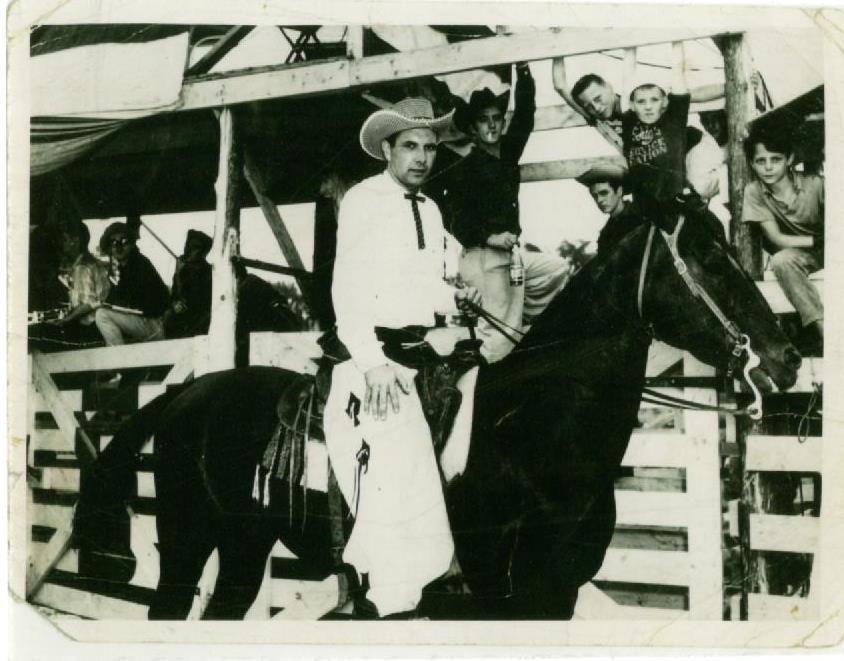
Roy was President of the WHAO at that time, helping to build the western industry. “We had our meetings at the Royal Connaught Hotel for years because I said we’re going to have our meetings somewhere where nobody could say oh, they had their meetings in somebody’s backyard. It gave credibility. And you didn’t wear jeans to the meeting. If you did you got a letter and got told about it. Today that wouldn’t work but it did back then. We changed the dress code of the western shows entirely. A lot of them would come in their barn clothes to horse shows. And we changed all that.”
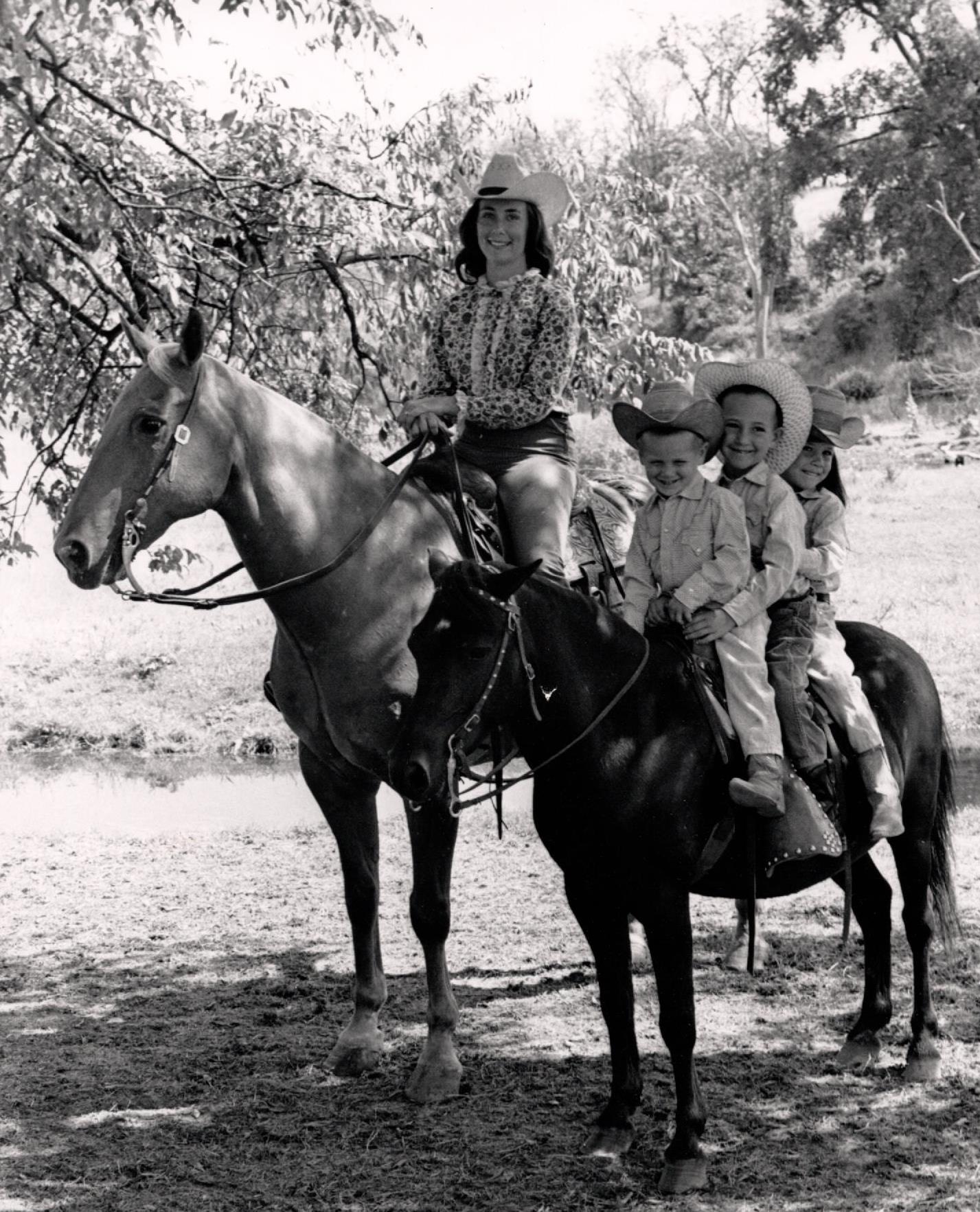
So anyway, that’s how Joan met Roy. They started going out right away, going to a barbecue the next day at Bob Tweed’s. The cowboys were all good friends back then, always having barbecues. That would have been around 1954. Roy and Joan dated for three years before they got married, going to a horse show every weekend somewhere. They got married in 1958.
Roy was from a fruit and vegetable farm in Clarkson. They had a milk cow and a team of horses to do farm work, but he was young when a tractor replaced the horses. He remembers driving single, scuffling. Roy’s parents weren’t horse people; Joan’s parents were city folks.
His first horse was an Appaloosa gelding named Desert Chief. “I won the stock horse class, first time I ever went to a show. I didn’t know what I was doing. Who knows what made me do it? I have no idea,” said Roy. “My parents didn’t have horses. I just thought it would be something to do.”
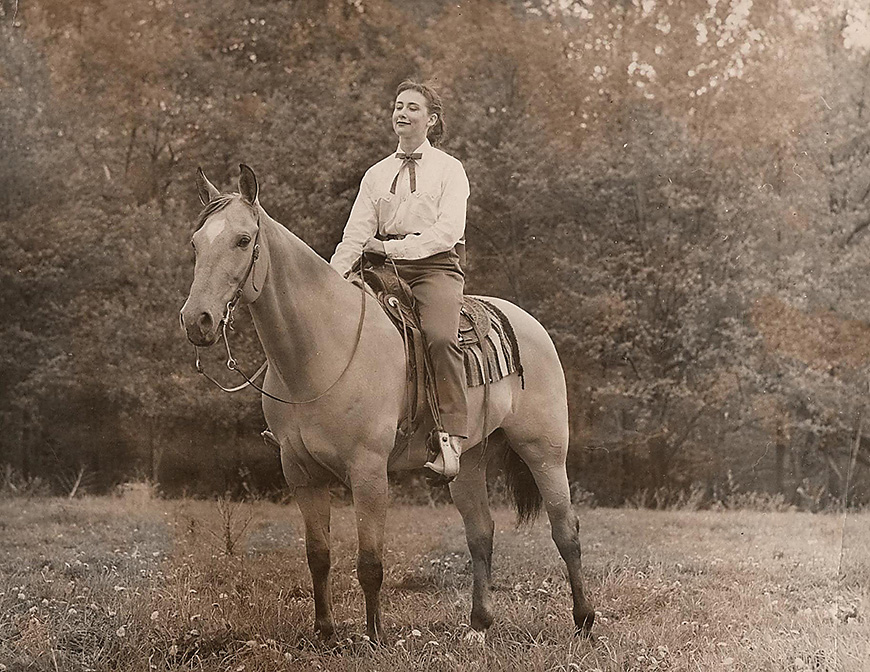 Western riding was going strong at that time. The Dundas Rodeo would attract 26,000 spectators over its three day run. There weren’t even stands, just a hill on one side where people would sit. Roy called the first meeting around the campfire there on a Saturday night to start the Ontario Rodeo Association.
Western riding was going strong at that time. The Dundas Rodeo would attract 26,000 spectators over its three day run. There weren’t even stands, just a hill on one side where people would sit. Roy called the first meeting around the campfire there on a Saturday night to start the Ontario Rodeo Association.
The WHAO had been going a few years by then. “I was green as grass when I went to the first meeting,” said Roy. He was never reluctant to step up when needed, getting elected as treasurer at 19 years old and two years later becoming president, holding that position for five years, stepping back for a year, then coming back for one more year.
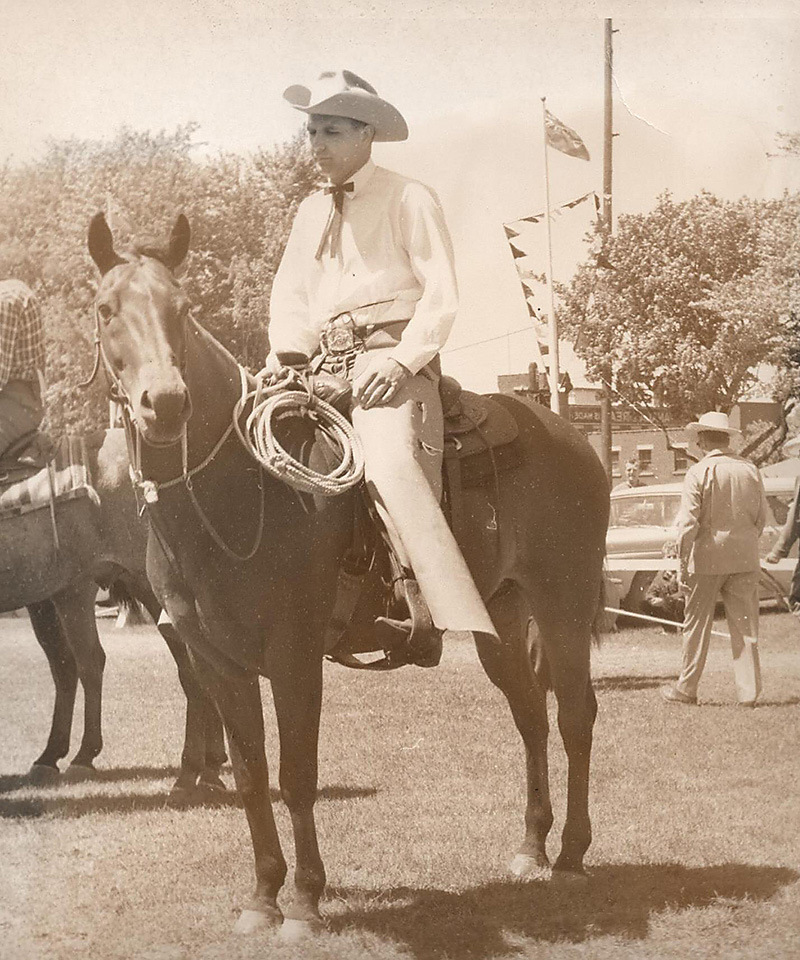 “When I started the Ontario Quarter Horse Association (OQHA) I didn’t think it would be right to do both,” said Roy. The first OQHA meeting attracted 126 people with maybe only 16 Quarter Horses in the country. It grew to 1,000 members in its heyday.
“When I started the Ontario Quarter Horse Association (OQHA) I didn’t think it would be right to do both,” said Roy. The first OQHA meeting attracted 126 people with maybe only 16 Quarter Horses in the country. It grew to 1,000 members in its heyday.
The first OQHA futurity was held at the Ionson farm in Georgetown. “I can see it right now,” said Roy. “Here’s my arena, it’s got a big wet spot in it, right inside the big doors. I got a pile of bark stripped off cedar posts and dumped a big pile of dirt on top of it and it held.”
The futurity has changed since then. The OQHA was started to promote Quarter Horses but today it’s more just a horse show association. We used to have a very strong breeder’s futurity but numerous things turned against us, said Roy. This happened in the United States too – the breeding has gone way down. You can’t have a futurity with no foals.
The futurity is only one piece of a larger horse industry puzzle, flanked by the economy, demographics and organizational structure, in which Roy and Joan have spent their lives.
Click here to read part 2 or our story.
